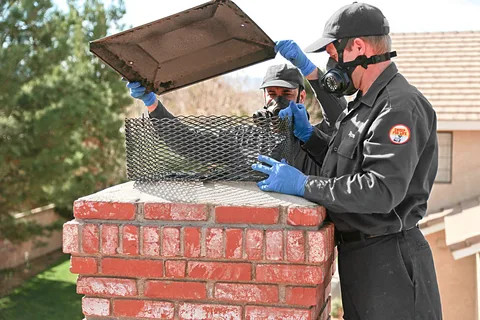Essential Chimney Sweep Guide for Spotless & Safe Fireplaces
Introduction
A fireplace adds warmth, comfort, and beauty to any home. But without proper care, it can quickly become a safety hazard. Soot, creosote, and blockages build up over time, reducing efficiency and increasing the risk of chimney fires. That’s where regular chimney sweeping and Chimney Inspection come in.
This guide explains everything you need to know about chimney sweeping and Chimney Inspection, including what a sweep does, why regular cleaning is essential, costs to expect, and tips for keeping your fireplace spotless and safe all year long.
What a Chimney Sweep Does
A chimney sweep’s main job is to clean and maintain your chimney and fireplace system to prevent fire hazards and ensure proper ventilation. Here’s what professional sweeps usually handle:
- Inspect the chimney structure, flue, and liner.
- Remove soot and creosote buildup.
- Clear blockages such as nests, leaves, and debris.
- Check for cracks, leaks, or damaged masonry.
- Test dampers and airflow for proper function.
By performing these tasks, chimney sweeps keep fireplaces safe and efficient for everyday use.
Why Chimney Sweeping Matters for Safety
Safety is the number one reason homeowners invest in chimney sweeping. Without routine cleaning, hidden hazards can put your family at risk. Regular sweeping helps to:
- Prevent chimney fires caused by creosote buildup.
- Reduce the risk of carbon monoxide poisoning.
- Improve indoor air quality by keeping smoke and soot out.
- Extend the life of your chimney and fireplace.
A clean chimney doesn’t just look better; it protects your home.
Key Features of a Professional Chimney Sweep Service
When hiring a certified chimney professional, you can expect:
- A thorough inspection of the chimney interior and exterior.
- Removal of soot, creosote, and any obstructions.
- Use of specialized tools and camera equipment for detailed checks.
- Identification of needed repairs or maintenance.
- A safety report outlining findings and recommendations.
These features make chimney sweep services essential for spotless, safe fireplaces.
Cost of Chimney Sweeping and Inspections
| Service Type | Average Cost Range |
| Basic Chimney Sweep | $100 – $200 |
| Level 1 Chimney Inspection | $75 – $150 |
| Level 2 Inspection (camera) | $150 – $300 |
| Chimney Sweep + Inspection | $180 – $350 |
| Minor Repairs (masonry, flue) | $250 – $800 |
While costs vary, investing in sweeping once a year is far less expensive than repairing fire or smoke damage.
Maintenance Tips for Homeowners
Along with annual chimney sweeping, homeowners can take simple steps to keep fireplaces clean and efficient:
- Burn only seasoned hardwoods to reduce smoke and creosote.
- Install a chimney cap to keep out animals and debris.
- Open the damper fully before lighting a fire.
- Clear ashes regularly, leaving a thin base layer for insulation.
- Schedule professional service annually, ideally before winter.
These habits will help keep your fireplace spotless and safe between professional visits.
What to Expect During a Chimney Sweep Appointment
A typical chimney sweep appointment includes:
- Initial inspection of the fireplace, chimney structure, and flue.
- Use of brushes, vacuums, and specialized tools to remove buildup.
- Clearing blockages such as nests or leaves.
- Safety checks for cracks, leaks, or ventilation issues.
- A final review with maintenance tips or repair recommendations.
Appointments usually last about one to two hours, depending on the system’s condition.
FAQs
How often should I schedule a chimney sweep?
At least once a year, ideally before the heating season begins.
What is creosote, and why is it dangerous?
Creosote is a byproduct of wood burning that coats chimney walls. It’s highly flammable and the leading cause of chimney fires.
Can I clean my chimney myself?
DIY kits exist, but professionals use tools and inspections that reveal hidden dangers most homeowners miss.
Do gas fireplaces need sweeping?
Yes. While they produce less soot, they still require inspections to check for blockages, leaks, and ventilation issues.
What’s the best time of year for chimney sweeping?
Late summer or early fall, before the fireplace is in regular use.
Why Regular Chimney Sweeping Is Essential
Chimney sweeping is about more than just appearances—it’s about safety, efficiency, and peace of mind. By scheduling annual service, you prevent fires, improve airflow, and ensure your fireplace runs smoothly throughout the year.
Conclusion
A well-maintained chimney is a key part of a safe and efficient home. Regular sweeping keeps dangerous creosote at bay, improves air quality, and prevents costly damage. By investing in professional chimney sweeping and inspections, homeowners can enjoy the warmth and charm of their fireplace with complete peace of mind.Read More Chimney sweep



Leave a Reply
Want to join the discussion?Feel free to contribute!